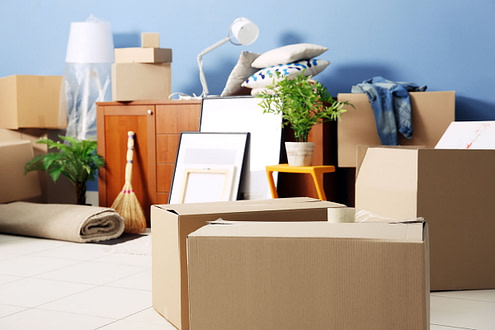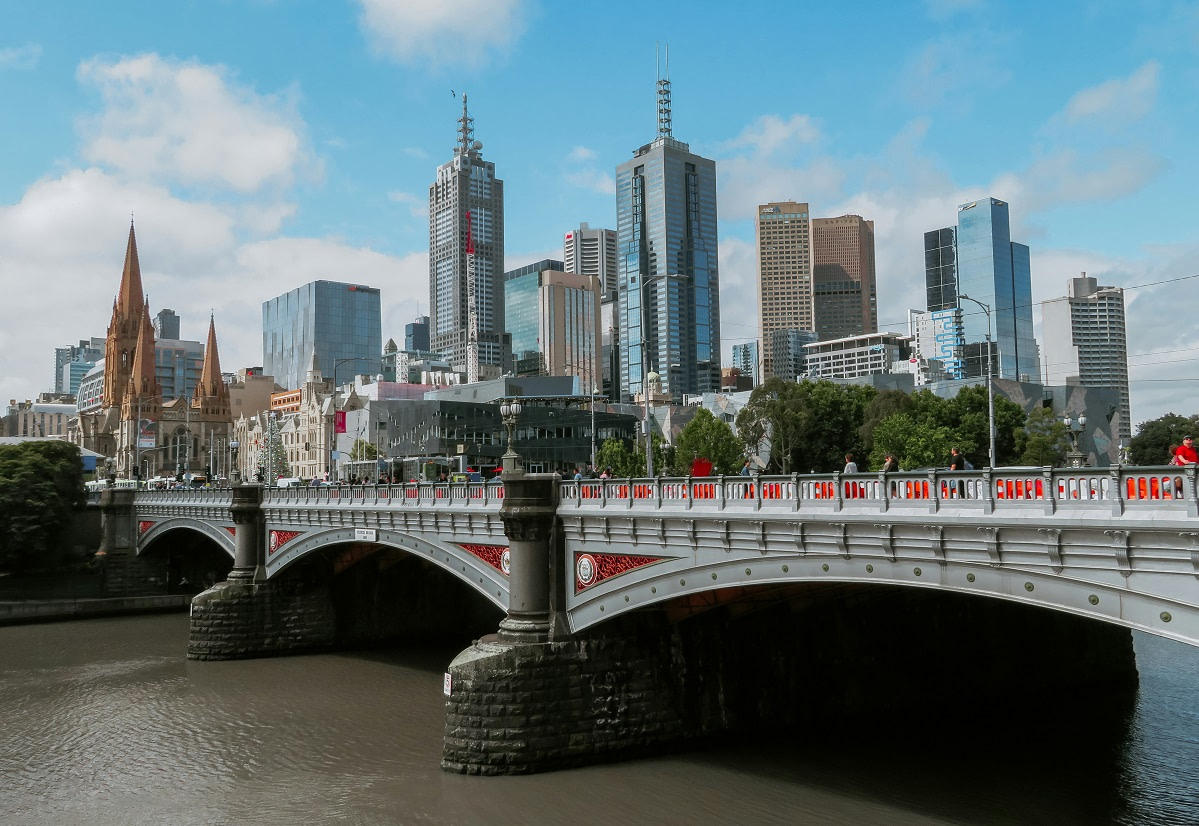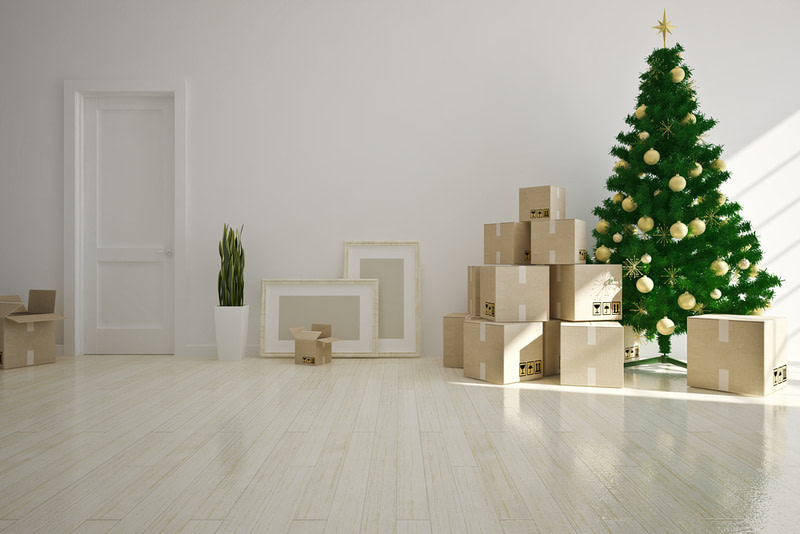Last Updated on September 11, 2023 by Vlad Stoikovich
Excited about your upcoming move but dreading the actual packing part?
You’re certainly not alone. No one really loves packing, it’s a long process and it’s super easy to feel flustered or overwhelmed. But if you get your ducks in order before you begin and approach the job methodically, it’s a whole lot easier.
Before you begin the task at hand, read on for HomeMove’s complete guide to packing for a move. We’ve got you covered from getting prepared through to the final items.
Up first though, when should you start putting your stuff in boxes?
When should I start packing to move?
You’ll start preparing for a move around a month to two months beforehand, but you won’t need to start packing until two to three weeks before your move-out date.
Of course, this is very individual and will come down to a few different factors such as how much stuff you have and the amount of free time you have available.
For instance, a single person who works part-time and lives in a one-bedroom apartment can probably complete their packing within a few days. Someone who works full time, and has a three-bedroom house and four kids, though, will need to start packing much earlier.
Think about how much time you have available during the week and on the weekends, and then decide what works best for you when planning when to begin packing.
Getting ready
As the adage goes: proper preparation and planning prevent poor performance. And it’s rather the same with packing up a house. Get all your prep done and organised properly, and packing for a move becomes much easier.
Stickering
Head to your local newspaper agent’s and invest in some inexpensive rolls of coloured stickers. Walk around your home stickering items according to whether they’re being kept, sold, or discarded.
Colour coordinating your stuff like this makes it a bit easier when it comes time for the actual packing and it helps you sort the essentials from the non-essentials.
Reduce the amount of packing you need to later
Moving is the perfect time to go full Marie Kondo on your life and belongings (okay, maybe not full Marie Kondo but you get the idea):
- Sell any unwanted items.
- Get rid of items, products, and clothes that are worn, broken, not fit for sale, and so on.
- Have a clear-out and get rid of old magazines and other things that are just hanging around without a clear purpose.
If you’re doing the Marie thing, ask yourself if things “spark joy”, if they don’t, do you really need them? There’s no need to turn to full minimalism, but cutting back on what you own is an excellent way to cut back on what you need to pack later.
Get your boxes, bubbles and tape sorted
Boxes
Don’t leave it until the last minute to source your packing boxes. Instead, get your hands on some high-quality boxes well in advance. You might be tempted to use any old boxes available, but going down this route can create more work if the boxes break, rip, or can’t be closed properly.
Believe it or not, not all cardboard boxes are created equal. Some are much stronger and capable of securely holding your belongings in transit. If, for example, you head down to your local supermarket and pick up a few boxes for free (always nice), these may be weak with water from produce or general wear and tear.
For sure, pick up any good, free boxes you can find. But be aware that you’ll probably need to grab a few dedicated moving boxes too.
HomeMove’s dedicated box shop has you covered with a range of standard moving boxes, cardboard tea chests, and nifty solutions that save you time, like our portarobe cardboard wardrobe. Plus, you can sell your unused and used boxes back to us after the move. We’ll even collect them for you if you’re within 25 kilometres of the Melbourne CBD.
Tape
You might want to use up the seventeen or so rolls of sellotape you have scattered around your house, but to secure your boxes properly for a move, it’s best to stick with a decent shipping tape. You’ll be taping the top of your boxes and the bottoms, so ensure you have a few rolls to hand before the packing begins.
Duct tape is also an option, but it’s generally more expensive than shipping tape and can be overkill, so there’s no need to rush out and buy rolls of the stuff if you don’t have any.
Bubble wrap
Bubble wrap is a godsend when it comes to keeping your fragile items safe during a move, we recommend that you collect as much as you can. Unfortunately, it’s not great for the environment so try and source it secondhand if possible.
Community Facebook groups are an easy way to make contact with those who have recently finished moving and have lots of bubble wrap left over; no doubt you’ll be able to find scores of the stuff. Remember to keep it hidden from the kids unless you’d like to have your bubbles burst!
Contact removalists
If you haven’t already, book your removalists. As a rule, it’s best to do this well ahead of time so you can secure the company you want on the date you want. Good removalists (like us here at HomeMove) get very busy, so get in touch with us as soon as possible before moving day.
Get your hands on a moving home checklist
There are a lot of moving parts when you’re moving houses, from changing your utilities over to sorting insurance. Having a detailed checklist is an excellent way of making sure you’re dotting the Is and crossing the Ts.
We’ve prepared one for you, which you can find here.
Packing up and moving on
Once you’ve prepared your moving supplies and you’re due to leave the property in a week or two, it’s time to tackle the actual packing.
The trick here is to pack what you’re not using regularly first and leave everything that’s in regular, daily use until last. It’s also helpful to tackle the task on a room by room basis.
Take it room by room
Bedrooms
- Pack casual clothing that you’re not using every day. Fold items and place them in moving boxes. Consider using clothing to pad and protect any accessories or fragile items from your bedrooms.
- For your formal clothing, look into wardrobe boxes. These handy boxes mean you can keep your nicer clothes unrumpled during the move (and you won’t need to get out the iron later).
- Organise your jewellery. Place any valuable items in a special container or lockable box.
- Just before the move, or after you’ve finished sleeping in the old property, put your pillows in bags to keep them free from dust then place them in moving boxes. Vacuum bags can help reduce volume and save space in your boxes.
- In the kids’ bedrooms, pack away any toys that they don’t use often. Use their clothes to protect any delicate items.
HomeMove top tip: Unless your dressers are very heavy without the drawers full, you do not need to unpack all the clothes inside them. Instead, leave your clothes inside the drawers and our movers will handle these as-is.
Living room
- Protect your TV screen by draping a blanket around it. Tape this into place. You can also tape any screws and the base to the back of the TV.
- Pack away any other electronics, such as gaming consoles. Remember to protect these with bubble wrap or soft furnishings. Cushions can be used in moving boxes to create padding between items.
- Make sure all your cables are kept together and packed tidily – there’s nothing worse than having to untangle cables in your new home!
- Any living room furniture can be left in situ for your removalists.
- Art and mirrors should be wrapped blankets or bubble wrap.
- Take the bulbs and any lampshades from the lamps in the living room. Pack these carefully in moving boxes and make sure they’re protected.
- Books, DVDs, games and so on can be packed in separate boxes. Remember to limit the weight in each box so that the box doesn’t break.
- Place any houseplants in open boxes. Consider bubble wrapping the pots if any are particularly fragile.
Bathrooms
- Pack each family member’s toiletries into their own wash bag or dedicated box.
- The bathroom should be the last room you pack before the move.
- Ensure any appliances are padded and protected.
Kitchen
- If needed, defrost the fridge/freezer two days before moving out.
- Organise all your dishes and plates. Pack dishes by carefully wrapping each item in bubble wrap and place these stacked in a box. Use tea towels to pad the sides and the gaps between stacks of plates.
- Sectioned boxes or wine bottle boxes are perfect for packing glasses.
- For small appliances, remove any accessories or blades. Wrap the cords around the appliances and pack the appliance bases with their additional components.
- Use bubble wrap or paper to wrap any sauces and jars before packing. Use boxed items along the sides of the box to secure jars.
- Pack your fridge’s contents into an Esky at the last possible moment.
Dining room
- Wrap any decorations in bubble wrap and pack them away carefully.
- Roll up any area rugs and use a rope to keep these rolled.
- Use a blanket to wrap any mirrors or large artwork.
Garages and sheds
- Expect to need more boxes than you anticipate; garages and sheds are generally fuller than their owners imagine!
- Pack tools in toolboxes and power tools in bubble wrap then into moving boxes or dedicated carry cases.
- Use separate boxes for each drawer or set of drawers so unpacking is easier.
- Place larger items such as bicycles and kids’ slides in one area so your removalists know they’re destined for the new house.
- Pack any cushions from outside furniture in bags.
- Ensure the lawnmower is drained of fuel before the move. Do the same for any other tool that has a gas tank.
- Instead of trying to keep flammable liquids such as weed killer or paint, throw these items out as these can be hazardous during the move.
Box labelling
For every box that you pack, make sure you label it clearly. Each label should note:
- Which room in the new house the box belongs in.
- What’s inside the box (be as detailed as possible so you don’t have to wonder where certain items are later).
- Whether any items in the box are delicate or fragile.
Heavy items
As a general rule, you can leave the heavy lifting to us (it’s what we’re here for, after all). But if you think you’ll need to move or lift heavy items while packing, use a dolly trolley to move these items safely.
Awkward items
Some items are just hard to pack. Whether they’ve got sharp edges, are an awkward shape, or simply don’t fit in a box well. For these things, bubble wrap or sheets or towels are your best bet. Wrap the items well and ensure that any jagged edges are smoothed out, then place them in boxes as best you can. Use additional towels or bubble wrap to fill any gaps in your boxes.
How long does it take to pack a whole house?
How long is a piece of shipping tape?!
It really depends on your availability, whether you’re packing up by yourself or if you have friends and family helping, and of course, how much stuff you have.
As a rule of thumb, it takes two people about a week to pack up a whole house when doing a few hours of work each per day. Another way to think about it is per room; estimate one room per day of packing. So if you have five rooms in total in your home, expect the task to take five days.
Short on time or feeling overwhelmed? You can call in the professionals.
You don’t need to pack alone
HomeMove makes moving as stress-free as possible, and we can also make packing before the move a breeze with our packing assistance services.
Our expert packers will come in and help you secure your belongings safely in moving boxes. We’re happy to work in any room you need help with or even pack up the whole house for you. There’s no need to let packing get you down, get in touch with us today to find out how we can help!
Packing for a Move FAQs
Most movers won’t move hazardous materials, perishable foods, pets, plants, and possibly certain high-value items. It’s important to discuss this with your moving company beforehand to avoid surprises on moving day.
You can pack non-perishable food items in sealed containers. However, it’s usually best to try and consume, donate or discard most food items before the move to avoid unnecessary packing and potential mess.
Try not to overload boxes, especially with heavy items like books. Use smaller boxes for heavy items and larger boxes for light items like clothing or linens. If a box is becoming too heavy, fill the rest of it with light items.
Label each box with a summary of its contents and the room it belongs to. This will make unpacking easier. Also consider noting down if a box contains essential items you’ll need immediately after the move.
If possible, pack electronics in their original boxes. If that’s not possible, use sturdy boxes and plenty of cushioning material. Make sure to back up important files before moving computers.
Wrap each fragile item individually in bubble wrap or packing paper, and place them in a box with enough cushioning material. Make sure they don’t have room to move around in the box. Always mark these boxes as ‘fragile’.
Pack a bag with essentials for the first day/night at your new home, including toiletries, medications, a change of clothes, important documents, snacks, and any valuables you don’t want to put in the moving truck.
Consider hiring professional packing services. They can pack your home efficiently and safely, reducing your stress and freeing up your time for other moving tasks.
You’ll need sturdy moving boxes in various sizes, packing paper, bubble wrap for fragile items, packing tape to seal the boxes, and markers to label them. You may also need specialty boxes for items like mirrors or artwork.
Start by packing items that you don’t use daily such as seasonal clothing, books, or decorative items. As moving day approaches, you can pack more frequently used items.

Vlad Stoikovich is the General Manager of HomeMove, with more than twenty years in the Melbourne removalist industry, you won’t find anyone with more experience or greater integrity.






